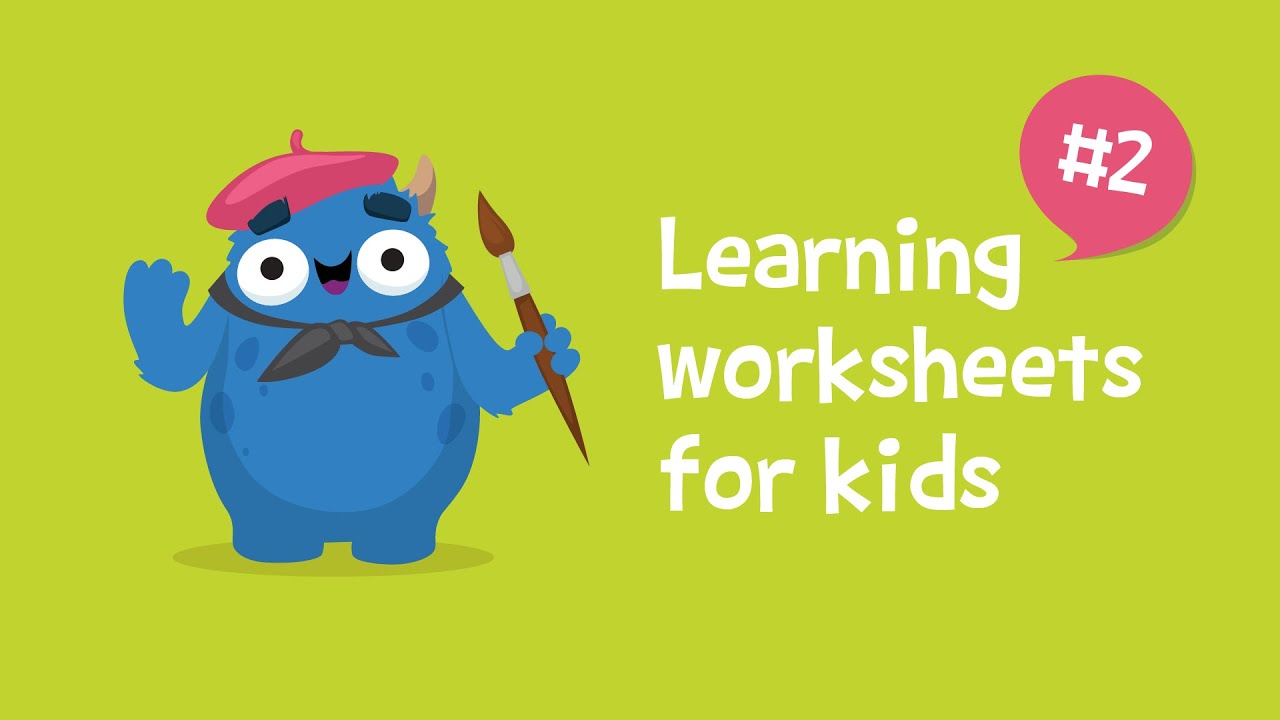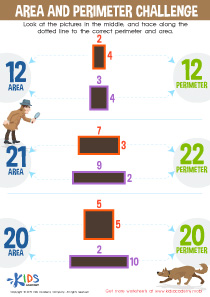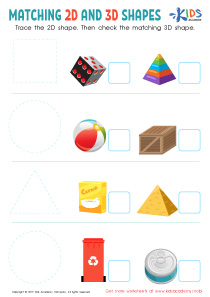Understanding fractions Fractions of Shapes Worksheets for Ages 3-6
9 filtered results
-
From - To
Discover our "Understanding Fractions of Shapes Worksheets," designed specifically for children ages 3-6. This engaging resource introduces young learners to the concept of fractions through fun, interactive activities involving various shapes. Each worksheet features colorful images and straightforward tasks that help preschoolers grasp the idea of parts and wholes while enhancing their problem-solving skills. Kids will enjoy cutting, coloring, and comparing fractions, which sets a solid foundation for future mathematics. Perfect for home or classroom use, these worksheets will make learning about fractions a playful and enriching experience for your little learners! ровете mathematical learning.
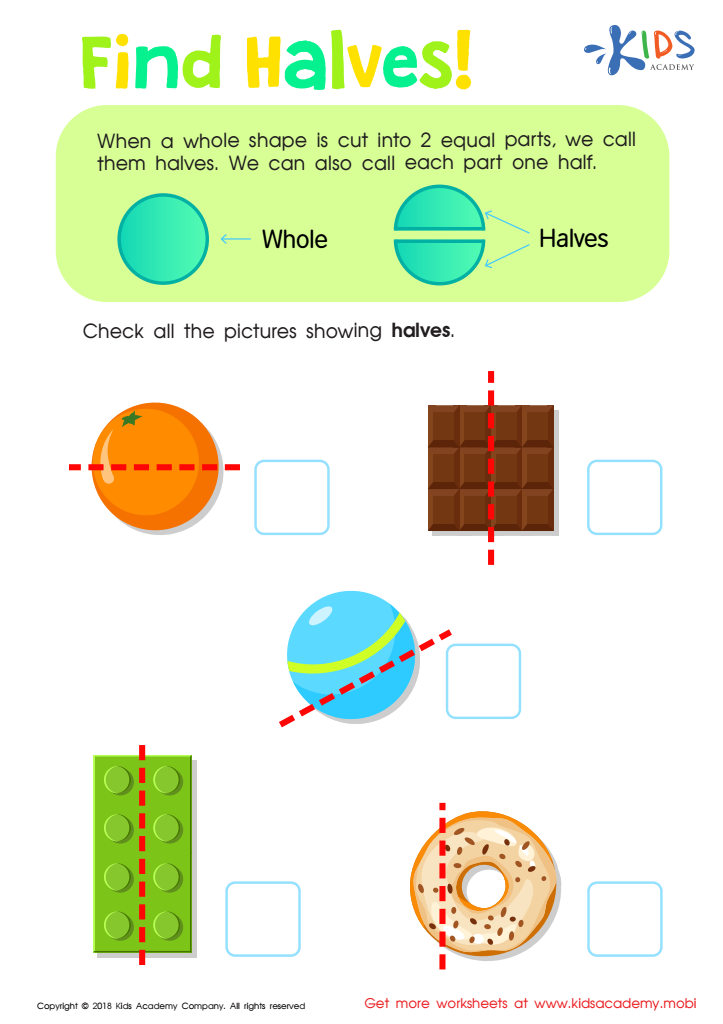

Find Halves Worksheet
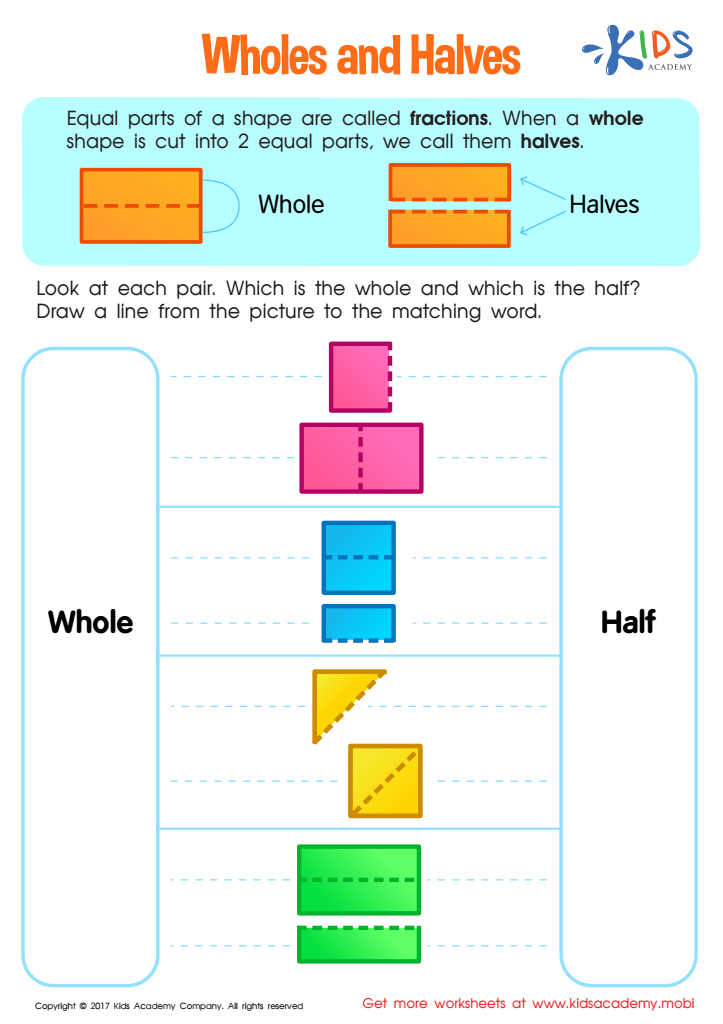

Wholes and Halves Worksheet
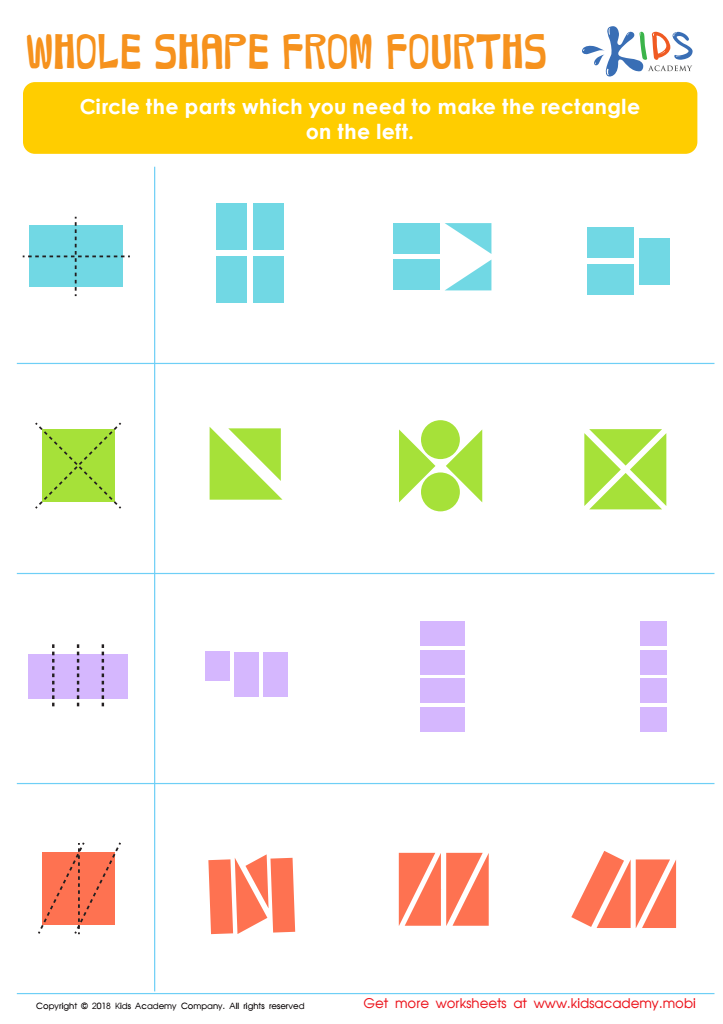

Whole Shape from Fourths Worksheet


Fractions: Shapes Worksheet
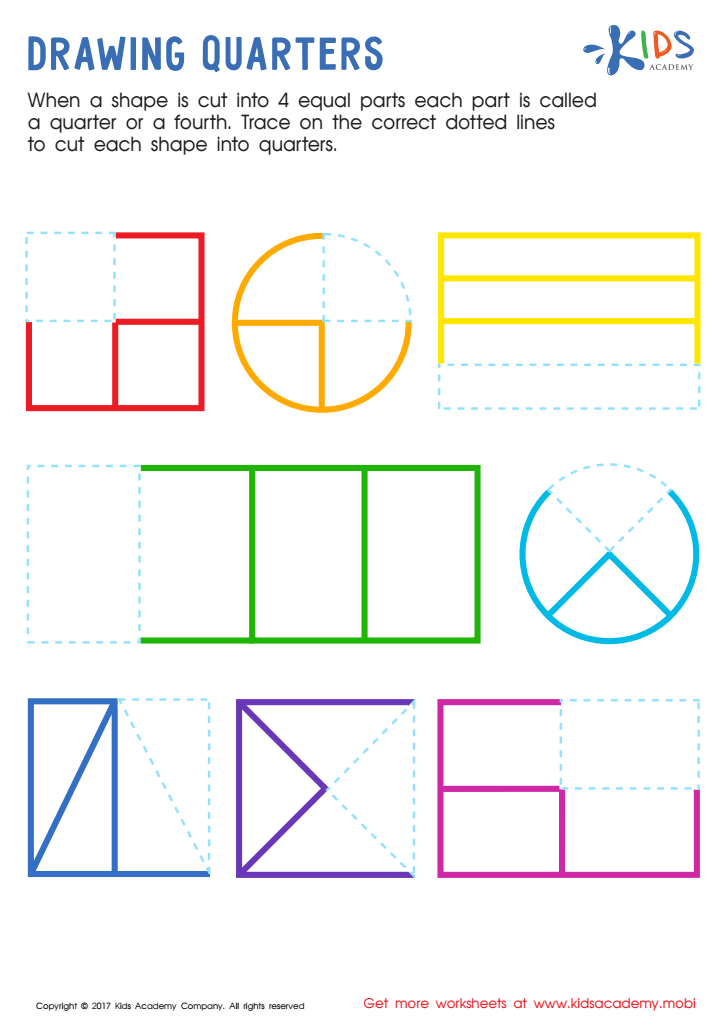

Drawing Quarters Worksheet
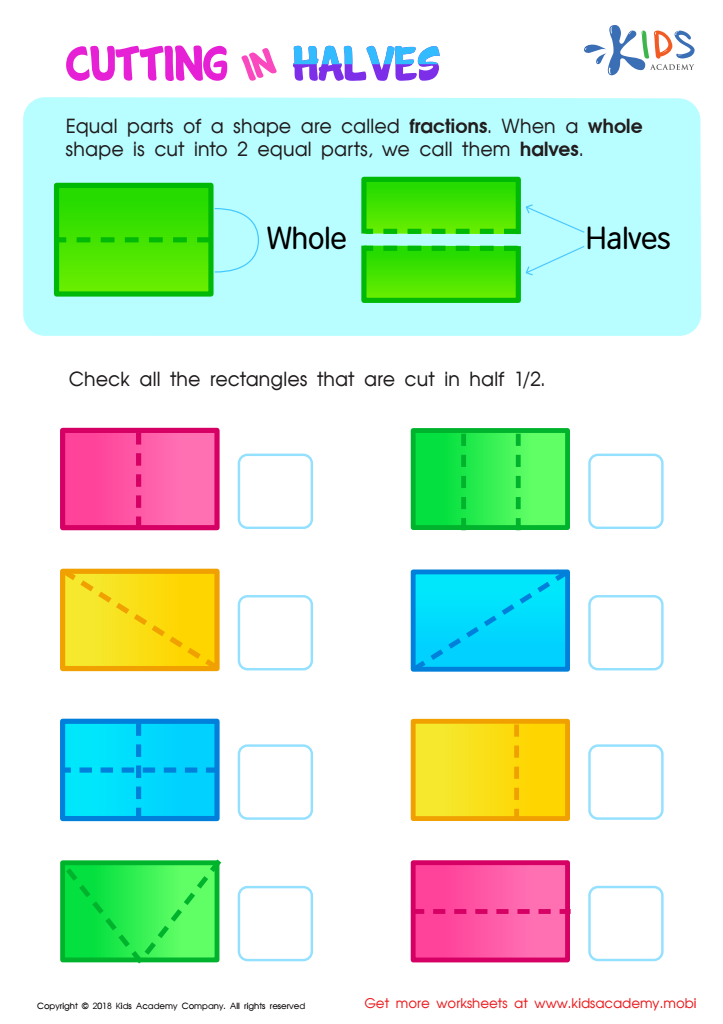

Cutting in Halves Worksheet
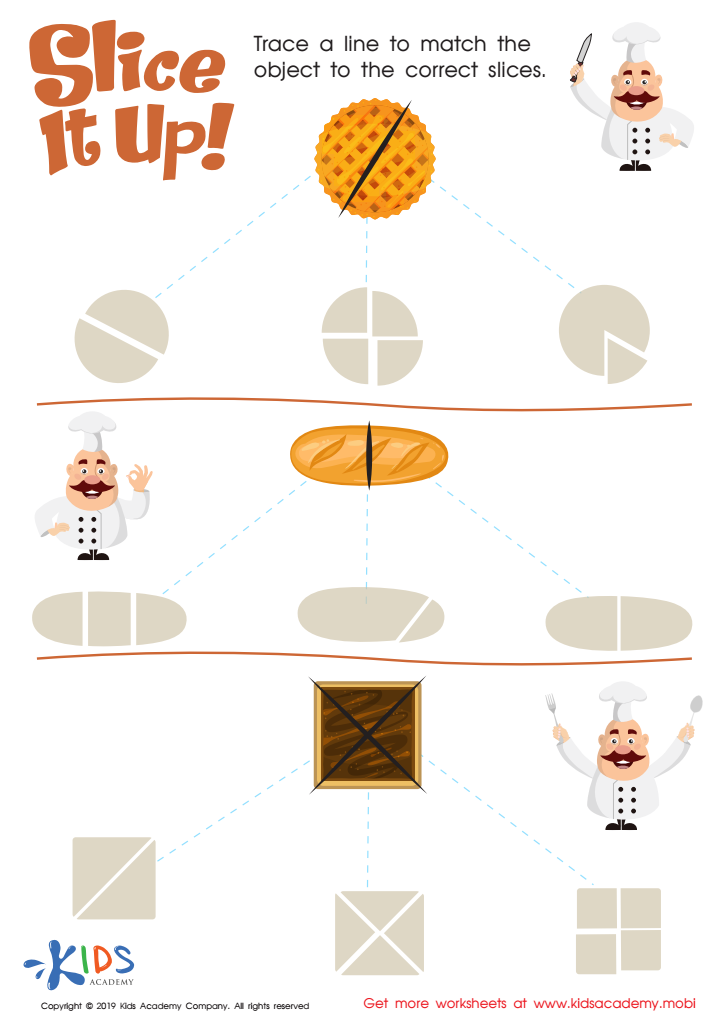

Slice It Up Worksheet
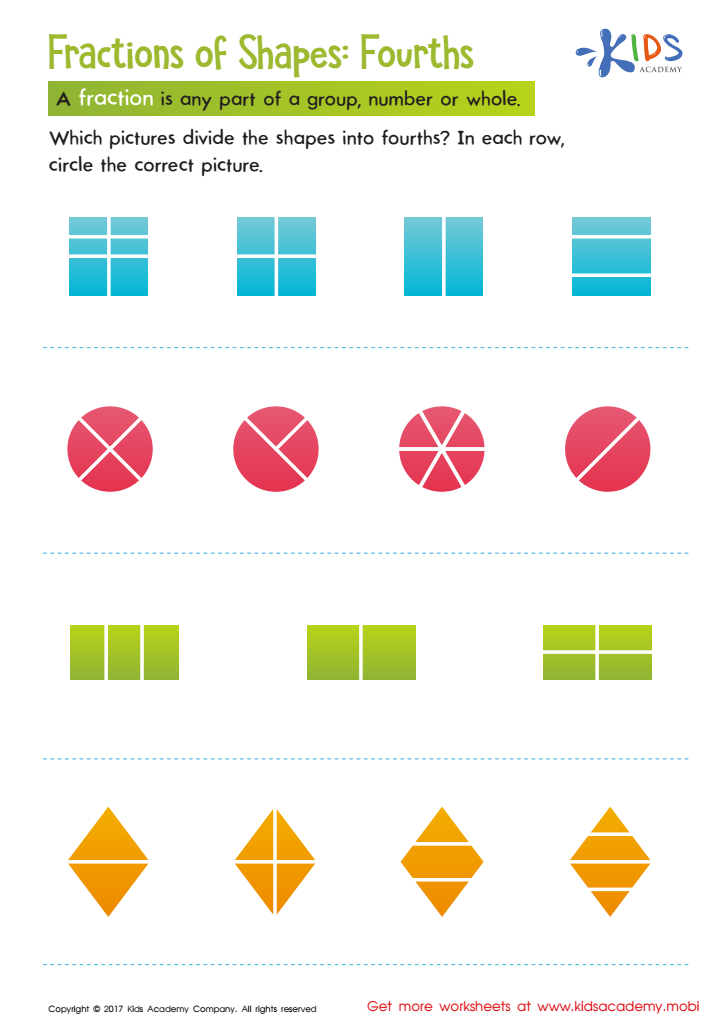

Fractions of Shapes Worksheet
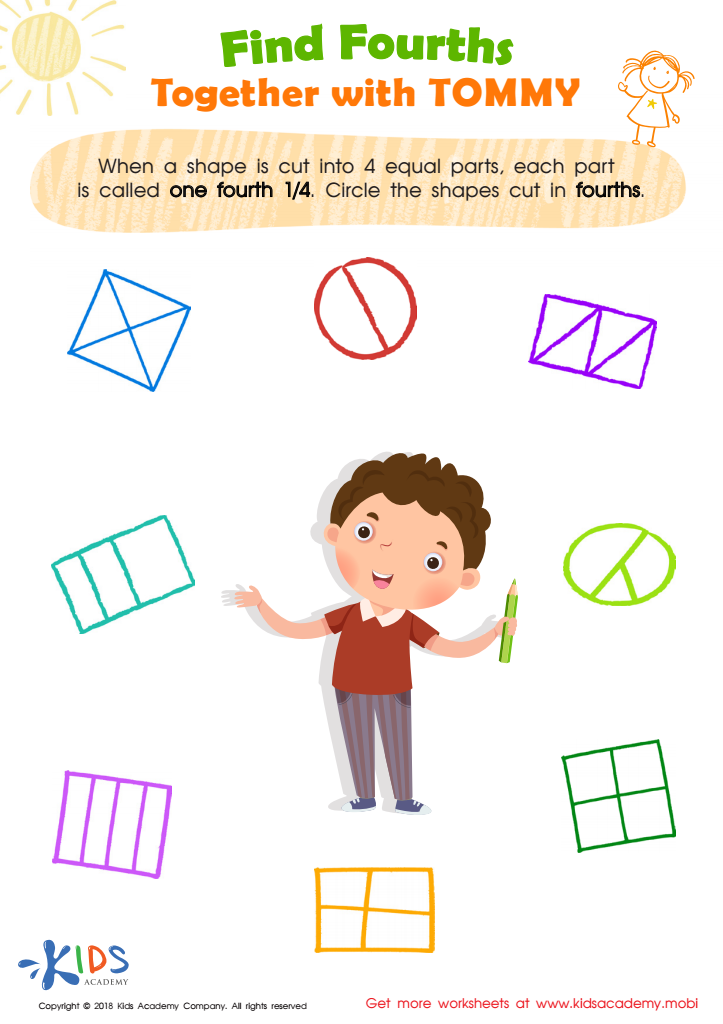

Find Fourths Together with Tommy Worksheet
Understanding fractions, especially fractions of shapes, is an important foundational skill for children ages 3-6 that can greatly impact their mathematical development. At this early age, children are naturally curious and engaged in exploring geometric shapes. Introducing them to fractions through these shapes helps them grasp foundational mathematical concepts in a concrete way.
When children learn about fractions as they relate to shapes (like halves, thirds, and fourths), they begin to understand concepts of equality, division, and part-to-whole relationships. This hands-on exploration can spark excitement about math, making it more relatable and enjoyable. Teachers and parents can foster this curiosity using simple activities like cutting fruits, dividing shapes or using puzzles—turning abstract math ideas into tangible experiences.
Additionally, understanding fractions early on supports critical thinking and problem-solving skills. It enhances a child's ability to visualize, compare, and manipulate mathematical concepts later in their education. By nurturing these skills in young learners, caregivers and educators pave the way for higher-level math competencies in the future. Therefore, caring about and actively promoting a solid understanding of fractions can set the stage for academic success and a positive attitude towards learning mathematics as children grow.
 Assign to My Students
Assign to My Students






